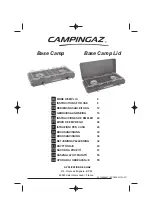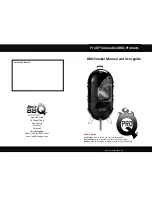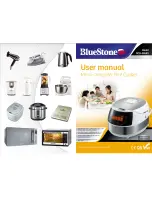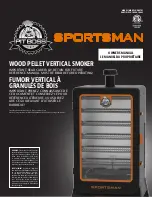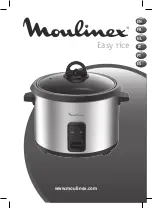
en
Cleaning aid
20
– From the glass cover on the oven light
This prevents stubborn stains.
4.
Remove any items from the cooking compartment.
The cooking compartment must be empty.
5.
Use the function selector to set
3D hot air
.
6.
Use the temperature selector to set the temperature.
a
The appliance starts heating after a few seconds.
7.
Switch off the appliance after one hour.
8.
Once the appliance has cooled down, wipe the
cooking compartment with a damp cloth.
Note:
Reddish marks may appear on the self-clean-
ing surfaces. This is not corrosion but rather residue
from food that contains salt. Food ingredients such
as sugar and egg white are not removed from the
surface coating and may stick to the surface. These
spots are not harmful and do not impair the clean-
ing ability of the self-cleaning surfaces.
9.
Attach the shelf supports.
→
17.5 Potential stains
In order to avoid these stains, clean the hob with a
damp dish cloth and dry it with a cloth.
Dam-
age
Cause
Action
Stains
Limescale
and water
marks
Only clean the hob when it has
cooled down sufficiently.
You can use a cleaning agent
suitable for glass-ceramic hobs.
Dam-
age
Cause
Action
Stains
Sugar, rice
starch or
plastic
Clean immediately.
Use a glass scraper.
17.6 Cleaning the hob
Clean the hob after every use to stop cooking residues
from getting burnt on.
Requirement:
The hob must be cold.
1.
Remove heavy soiling using a glass scraper.
2.
Clean the hob with a cleaning product for glass
ceramic.
Follow the cleaning instructions on the packaging of
the cleaning product.
Tip:
You can achieve good cleaning results using a
special sponge for glass ceramic.
17.7 Cleaning the hob surround
If the hob frame is dirty or stained after use, clean this.
Note:
Do not use a glass scraper.
1.
Clean the hob frame with hot soapy water and a soft
cloth.
Wash new sponge cloths thoroughly before use.
2.
Dry with a soft cloth.
18 Cleaning aid
The cleaning aid is a fast alternative for occasionally
cleaning the cooking compartment. The cleaning aid
evaporates soapy water and therefore softens dirt. This
means that dirt can be removed more easily.
18.1 Setting the cleaning aid
WARNING ‒ Risk of scalding!
If there is water in the cooking compartment when it is
hot, this may create hot steam.
▶
Never pour water into the cooking compartment
when the cooking compartment is hot.
Requirement:
The cooking compartment must be
cooled down completely.
1.
Remove the accessories from the cooking compart-
ment.
2.
Add one drop of detergent to 0.4 l water and pour it
onto the centre of the cooking compartment floor.
Do not use distilled water.
3.
Use the function selector to set the
Bottom
heating
type of heating.
4.
Use the temperature selector to set 80 °C.
5.
Switch the appliance on for four minutes.
6.
Switch off the appliance after four minutes and leave
it to cool for approx. 20 minutes.
18.2 Cleaning the cooking compartment
after using it
ATTENTION!
If the cooking compartment remains damp for too long,
this results in corrosion.
▶
After using the cleaning aid, wipe the cooking com-
partment and allow it to dry completely.
Requirement:
The cooking compartment has cooled
down.
1.
Open the appliance door and absorb the residual
water with an absorbent sponge cloth.
2.
Clean smooth surfaces in the cooking compartment
with a dish cloth or a soft brush. Remove stubborn
residues with a stainless steel spiral scourer.
3.
Remove limescale deposits using a vinegar-soaked
cloth. Wipe this away with clear water and use a soft
cloth to also rub underneath the door seal dry.
4.
Once the cooking compartment is sufficiently clean:
‒
In order to cool the cooking compartment, leave
the appliance door open in the detent position
for approx. one hour.
‒
To dry the cooking compartment more quickly,
heat up the appliance with the door open with
3D
hot air
and 50 °C for approx. five minutes.































